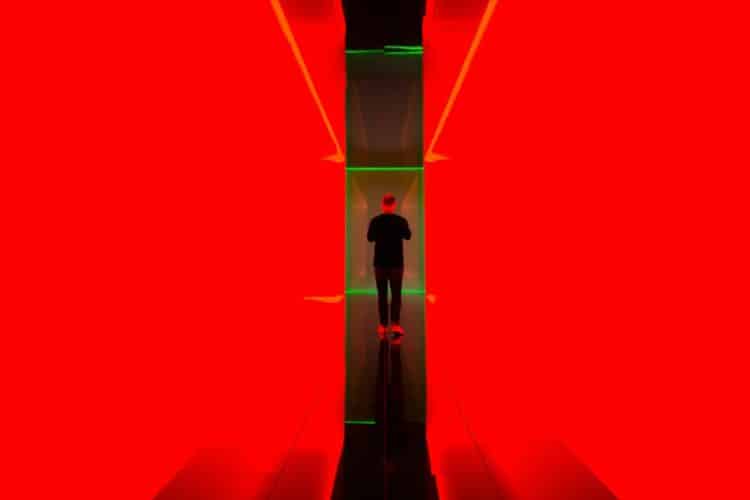Light & Space
Born in 1943 in Los Angeles, California, James Turrell received the MacArthur Fellowship only 40 years later. For those who may not be familiar, the MacArthur Fellowship has a popular nickname: the genius grant. It is allocated to US artists who not only create a refined and nearly perfect project of their own creative form but have also helped evolve their respective creative field.
In the case of Turrell, the genius grant could not have been more appropriately invested. As an artist, he works within the field known as Light and Space, which focuses on geometric designs, abstract concepts, as well as working alongside perceptual phenomena of light, scale, and volume. However, Turrell has also integrated his other skills into his art form, which helped him spread the field of Light and Space art across the world.
Like many artists, such as Laura Ascota, who designs clothes but also partakes in graphic design, painting, photography, film, and music, Turrell is a multidisciplinary artist with a long track record of studies and interests. As a conscientious objector to the Vietnam War, Turrell instead helped fly monks out of Chinese-occupied Tibet, although he later spent a year in jail for teaching others how to ‘dodge the draft’. He studied mathematics, geology, and astronomy. He restored planes in order to support himself before he was successful.
But what Turrell truly loved to work with was light. His paintings and other interactive pieces were built off of his first inspirational works, in which he would lock himself in a room and tape the windows with specific shapes in order to create certain slants and movements of natural light. In 1968, he created his first work with this method, called Shallow Space Constructions. By 1969, he was flying in a plane to create sky drawings by releasing smoke and cloud-seed materials from a plane.
Fast forward a few decades to 2013, when Turrell became one of the first artists to open up three different shows at prestigious museums like the Guggenheim in New York City, the Museum of Fine Arts in Houston, and the Los Angeles County Museum of Art. To give his mind and light-bending art some context, these three shows took up a combined 92,000 square feet, marking the first time an artist was allocated such vast amounts of space for simultaneous, high-profile shows.
Works Great & Small
For an artist in a love affair with their own creative form, there is no project too great or too small. Take Turrell’s piece Akhob, for instance, a color-immersion project located atop a Louis Vuitton handbag store in Las Vegas, Nevada. Known as ‘ganzfelds’ or ‘light fields’, this tiny and strange installation is designed to be walked through, much like most of Turrell’s work. On a cycle that lasts 24 minutes, Akhob is a delightful microcosm for the soothing, ethereal world of Turrell’s light and color work. Unfortunately, like most of his pieces, the installations can be a bit difficult to find—especially considering his projects are often shipped around the world.
For those disheartened by the big check it’ll take to get to Vegas and then inside the Louis Vuitton store to see Akhob, consider entering a sweepstakes or other competition. The Vegas Baby Sweepstakes are a popular contest that run almost year-round, while other companies like Anderson Advisors and PokerStars offer chances to win an all-inclusive trip, with the latter also offering an opportunity to work on those poker skills before hitting the Vegas Strip.
On the other hand, much unlike Akhob, Turrell’s largest work is much closer in size to the mall the Louis Vuitton mentioned above is housed inside. Roden Crater is the title given to an extinct cinder cone volcano located outside Flagstaff, Arizona that fell into Turrell’s possession. That’s right, someone gave Turrell an extinct volcano and he’s spent nearly 41 years converting it into a living exhibition designed to bring viewer attention to the sky by working with, what else, light and space.
Begun in 1979, Turrell once speculated the project would be finished in the early 1990s. However, neither Turrell nor his team volunteer a date of completion any longer. Instead, fans will be left wondering what Roden Crater has in store for human viewers as well as the cosmos, which the artist intends to focus on through selective skylights.

